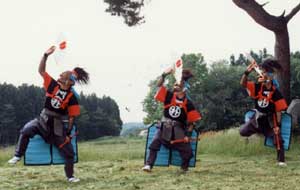
| Classification | Ken dance |
|---|---|
| name | Park Nokizawa Nemboku Kenbu (Balling) |
| Designated date | December 13, 1993 |
| Holding group | Park Nokizawa Nembutsu Ken dance preservation meeting |
| location | Oshu Oshiyama, Izawa-ku |
watch video
Great Buddha
Ichiban Garden
Overview
Nembutsu Ken Dance was danced in the Nishi-Saoi area, but it was later transmitted to Gion, Esashi, and Waga areas, and was said to have been danced in prayer for demon surrender, retaliation, remembrance of the locals, and a state of life. In particular, it is said that Park Nokizawa Nemboku Kenbu has inherited the "High Museum", which was created to calm down the ghosts of the master Yoshitsune lord who died in the high end of Hiraizumi. According to tradition, "Takakanmonokai" was danced only in the Takakan as a non-permanent thing, but in Meiei 3 (1495), Nakatsugawa in Morioka, Tachibana in the south, Giwazawa in Morioka by Takara Ken dance Noichiro It was transferred to the bird of the capital, and it was passed on to Gogoro of Park Nokizawa in 1863. The dancers are basically based on a set of eight, but “One-handed garden (Honken Mai)” has 13 monkeys with a monkey-faced caqata (Sakhal incarnation) and two girls or boys' torso, The ghost of the warriors is raging, and eventually a story is developed where it is calmed down by Kakata. In the past, they were danced in temples and shrines and in private gardens as a spiritual offering for the Bon, but their practices have faded, and they are often invited to dance at shrine ceremonies, various entertainment events, and weddings. In addition, as a yearly dance, there will be a "Sakai" event in October.
